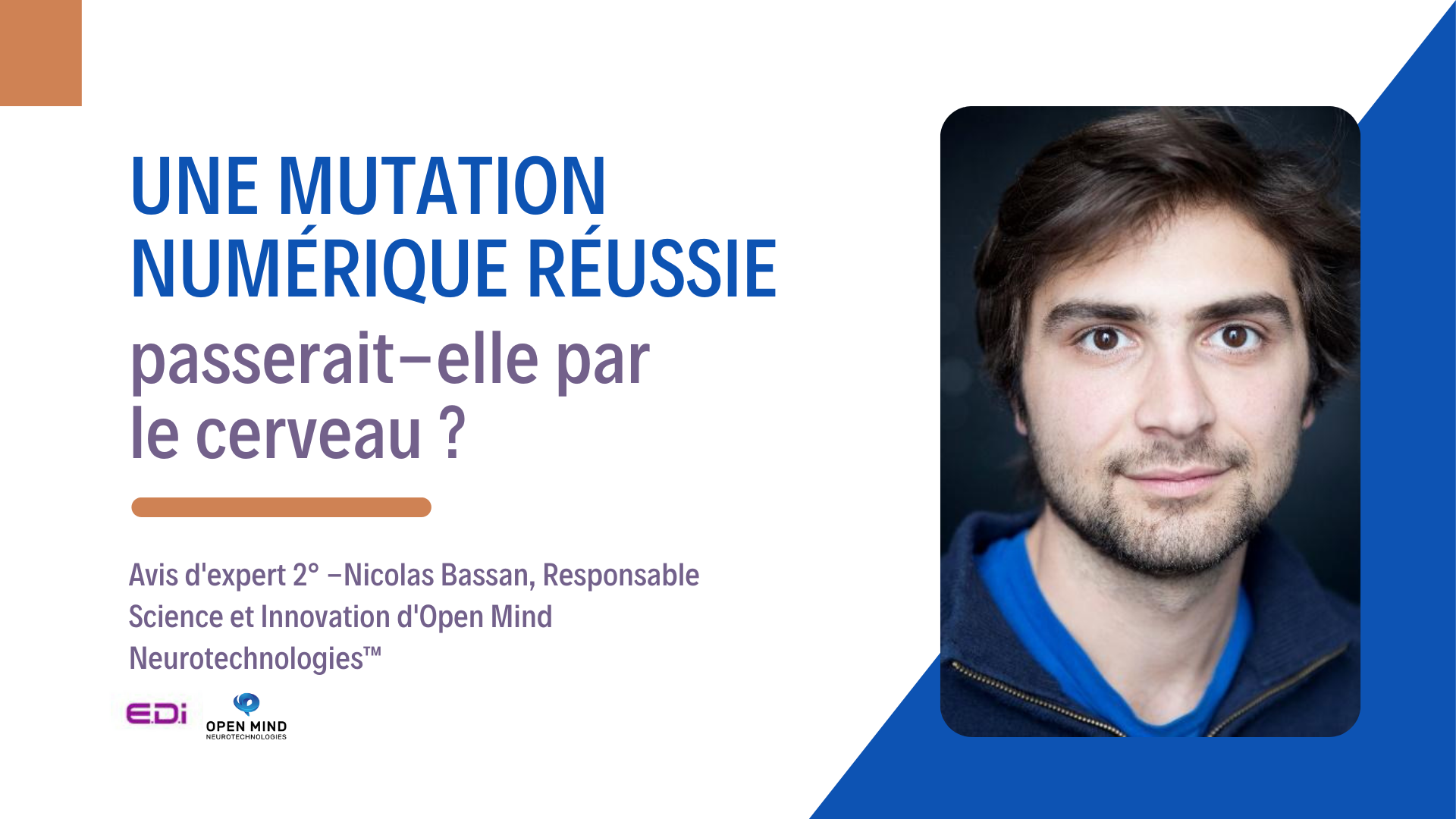Published in EDI, Issue N°114 – February 2022
Neuroscience has played a key role in the development of artificial intelligence, one of the pillars of digital transformation. But that’s not their only contribution in this field: they enable us to better understand and overcome resistance to change, the key to the success of any IS project.
By Nicolas Bassan, Science and Innovation Manager at Open Mind Neurotechnologies™
Think of the human factor as a computer system: hardware, the base layer, and software, the set of acquired updates. Designed 200,000 years ago, our hardware has remained relatively stable.
It’s this hardware, our nervous system, which governs our so-called “archaic” reflexes, such as fight, flight or reward. The problem is that our environment has changed dramatically: on 24-hour news channels or via social networks, stimuli are relentless for our hardware, which is reaching its capacity limits.
Resilience and overheating
Resilience is a neuroscientific concept that has become somewhat overused. Our autonomic nervous system is made up of the sympathetic nervous system, the accelerator pedal which provokes a series of physical reactions in the event of stress (clammy hands, accelerated heart rate, etc.). It has its counterpart, the parasympathetic system, which applies the brake to regain the nominal state. Under the pressure of chronic over-adaptation, it becomes more difficult to regain this basic state. A “allostatic load”[1] is gradually created, the real weight of accumulated, poorly regulated overstimulation.
Unfortunately, this over-adaptation is not totally visible or perceptible, especially for people with poor “interoception” skills – i.e., who know little about themselves and pay little attention to their body’s signals. Without systematically leading to burnout, this insidious accumulation has a significant impact on well-being, but also on flexibility (-7 points), creativity (-9 points) and teamwork skills, which are drastically reduced, as we measured in our impact study before and after COVID[2] ..
“
Understanding the neuroscientific underpinnings of stress and its negative impact on coping behaviors is a major lever in positioning your digital transformation.
“
Technology to the rescue
When inviting people to adopt a new tool, avoid systematically pointing out the fatal risks of not changing. Instead, incorporate into your change management programs approaches that help build up natural resources in the face of adversity. Because it is possible to develop the brakes on the autonomic nervous system and mental flexibility. For those already converted, a mindfulness meditation program is a good lever. But for many professionals, a significant step remains to be taken before adopting such practices… For geeks: choose programs based on video games and biofeedback! Inspired by brief therapies, in particular cognitive-behavioral therapies already widely used by psychologists in the treatment of anxiety, these are new tools for supporting serene and lasting human change.
Another benefit of technology: data. Many deep-seated cultural obstacles can be quantified by measuring adaptive behavior in games. Secondly, grouping and anonymizing data is the only way to bring a team or organization face to face with its brakes on agility or innovation, such as an exacerbated reflex of overprotection in the face of risk, or low mental flexibility in an uncertain environment. And thus transform them into agents of change. Whether for IT teams themselves, who are particularly exposed to risk, or for business teams at the heart of the adoption of a new tool: the palette of tools is broadened thanks to neuroscience, and enables successful digital transformation!
[1] Do Yup Lee, E. K., & Choi, M. H. (2015)[2] https://www.omind.me/etude-dimpact-le-corps-les-emotions-au-coeur-de-la-performance-post-covid/

